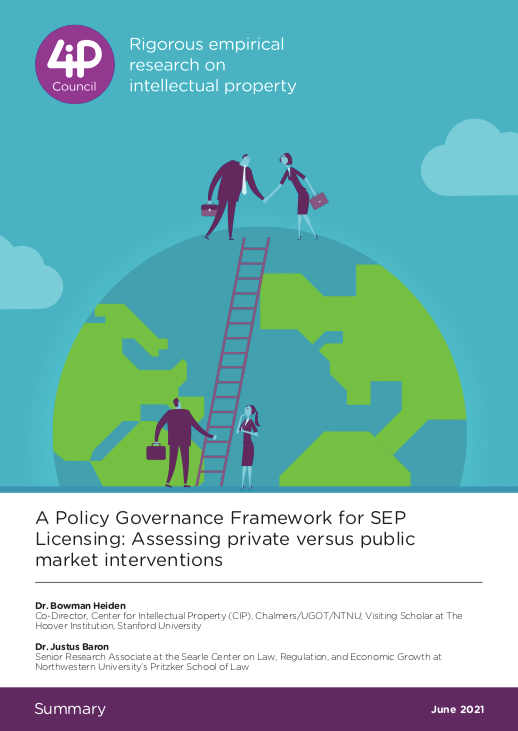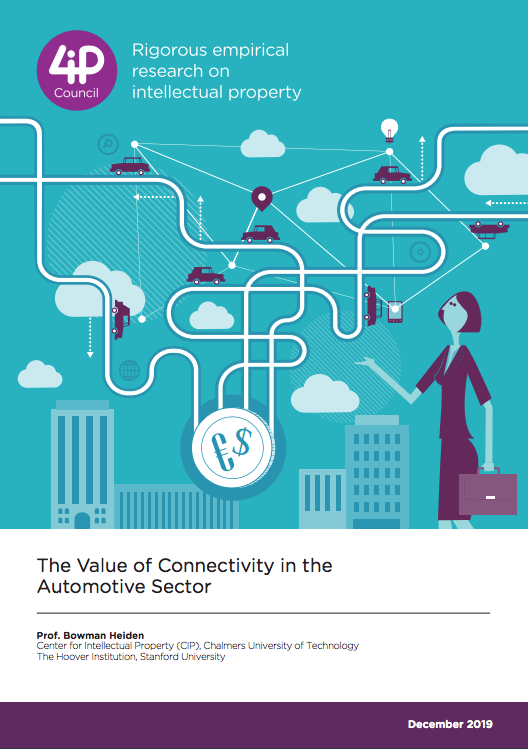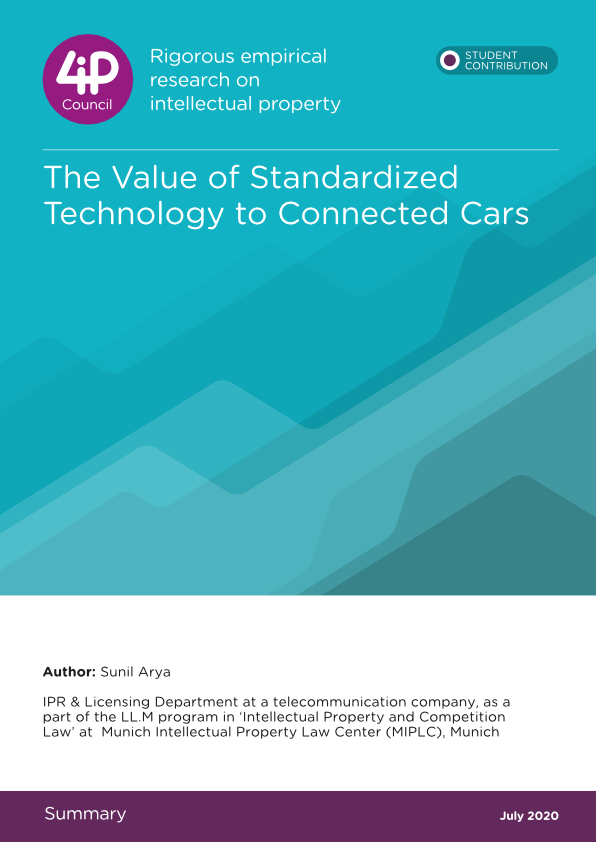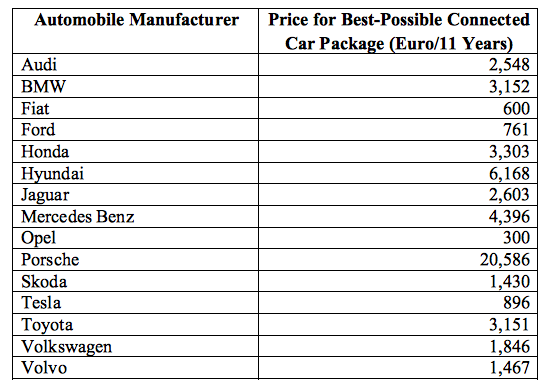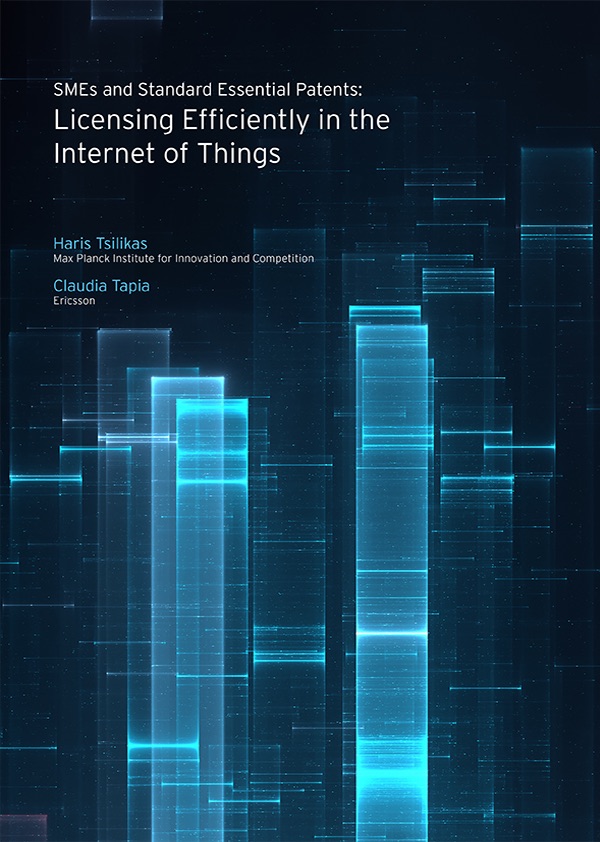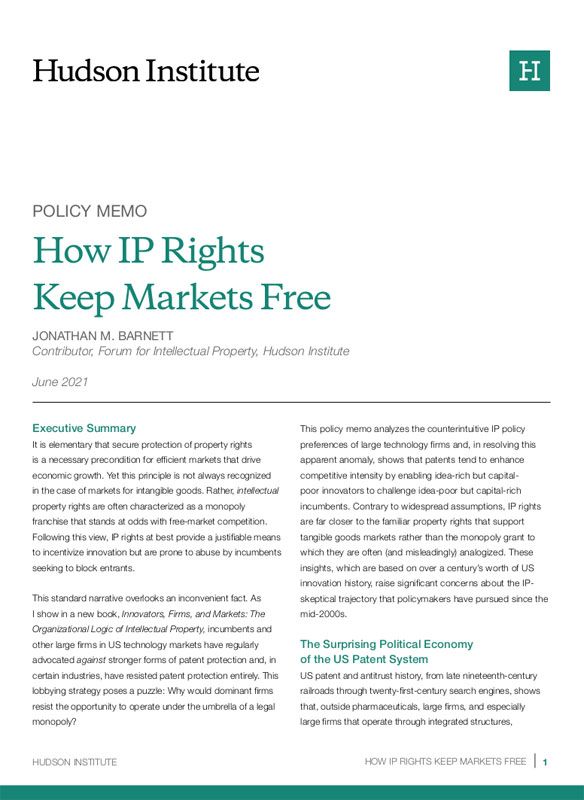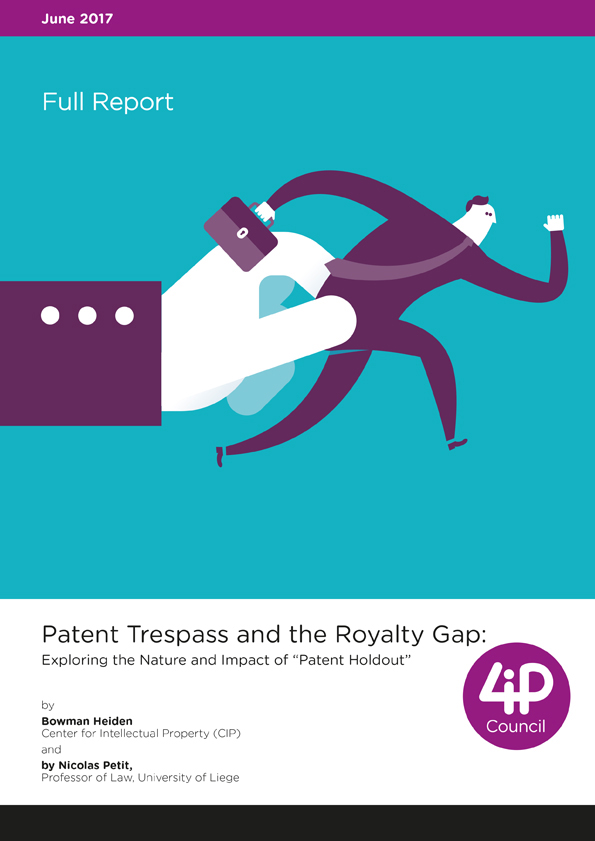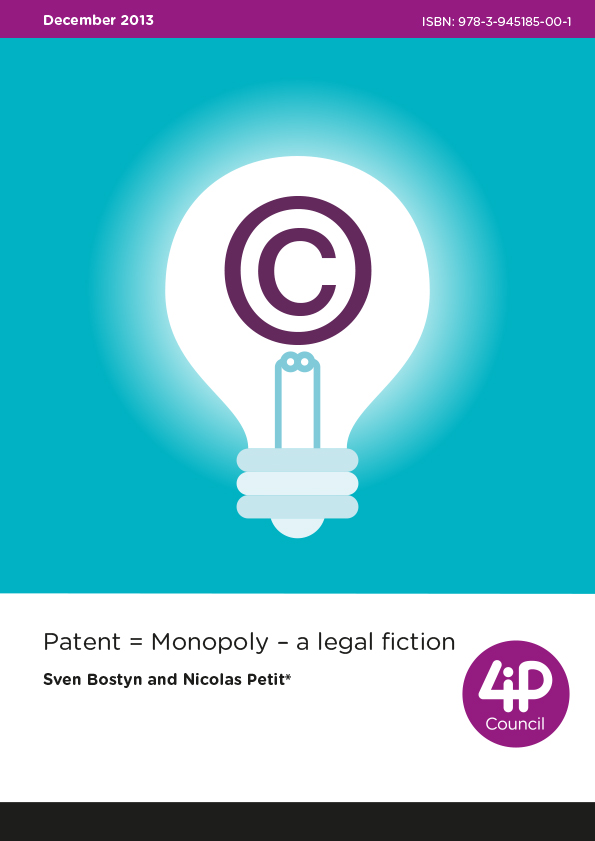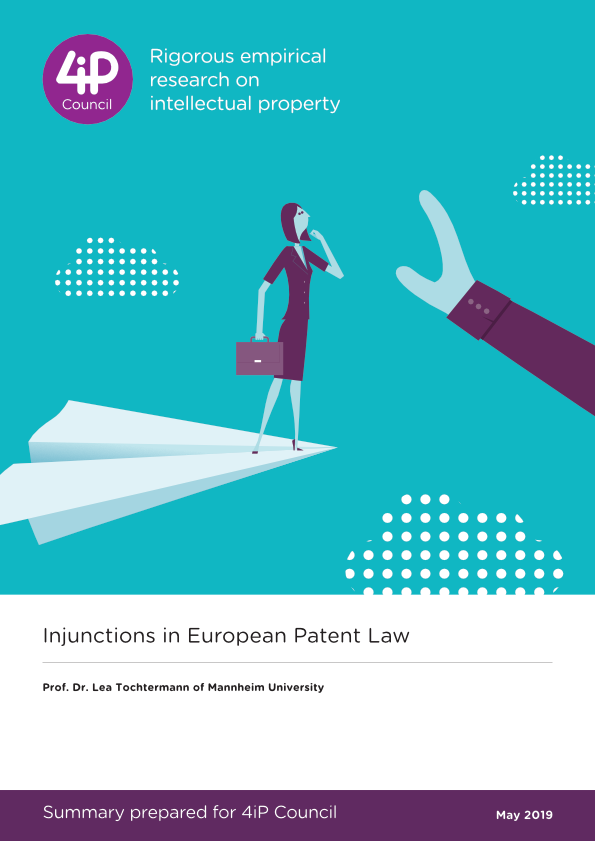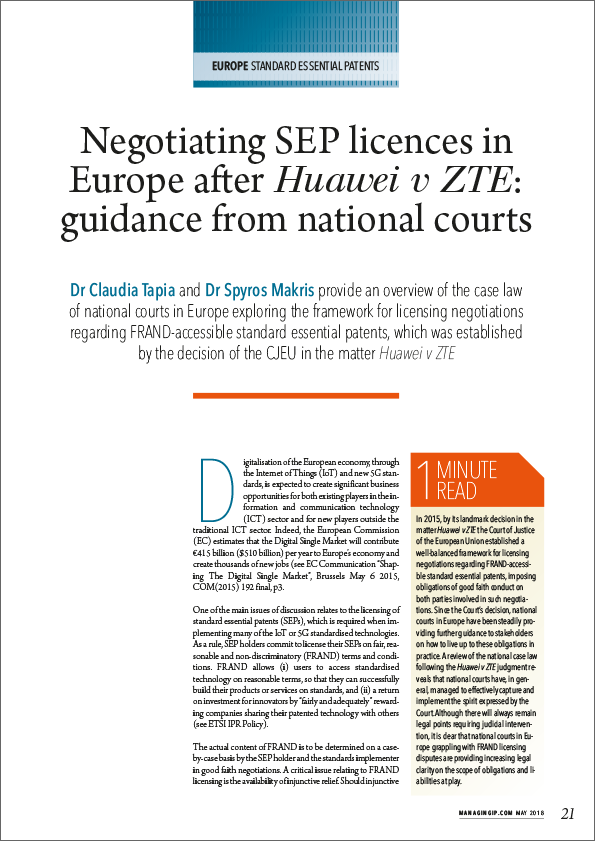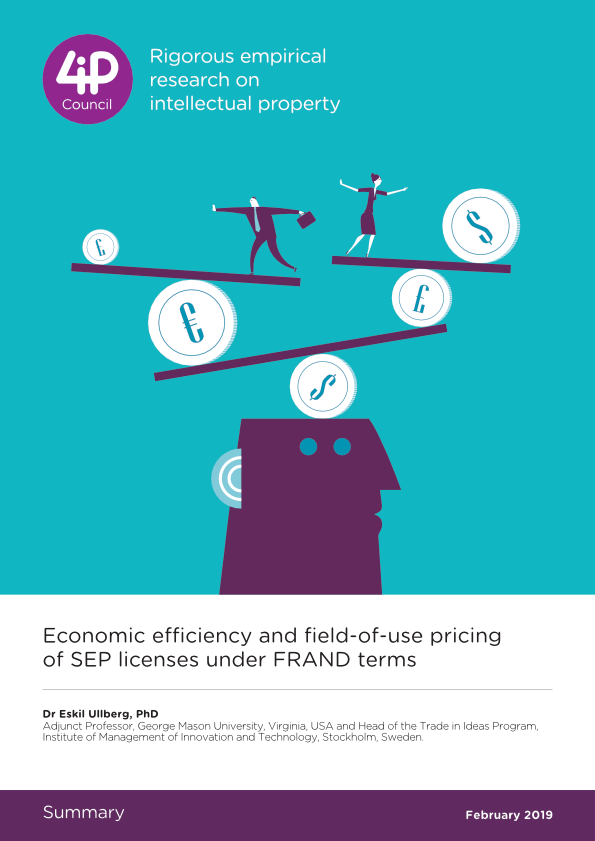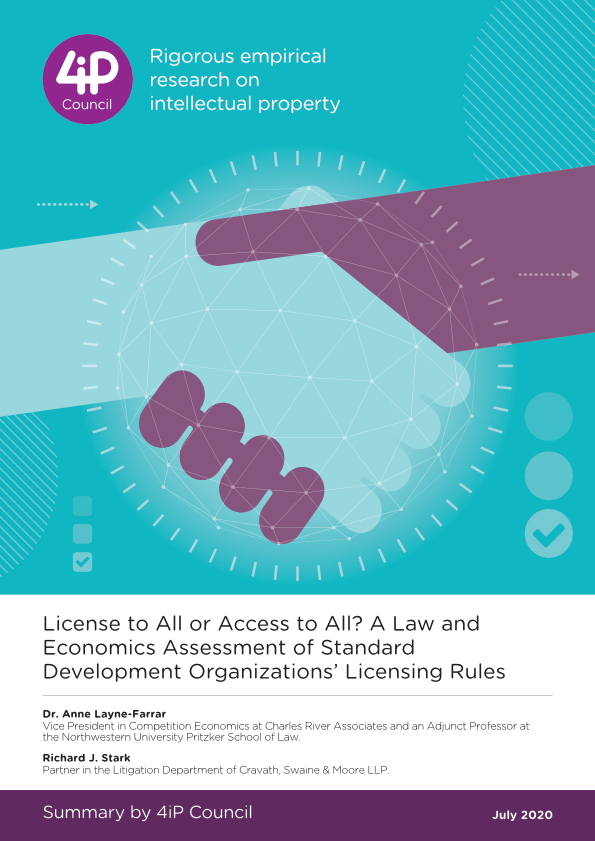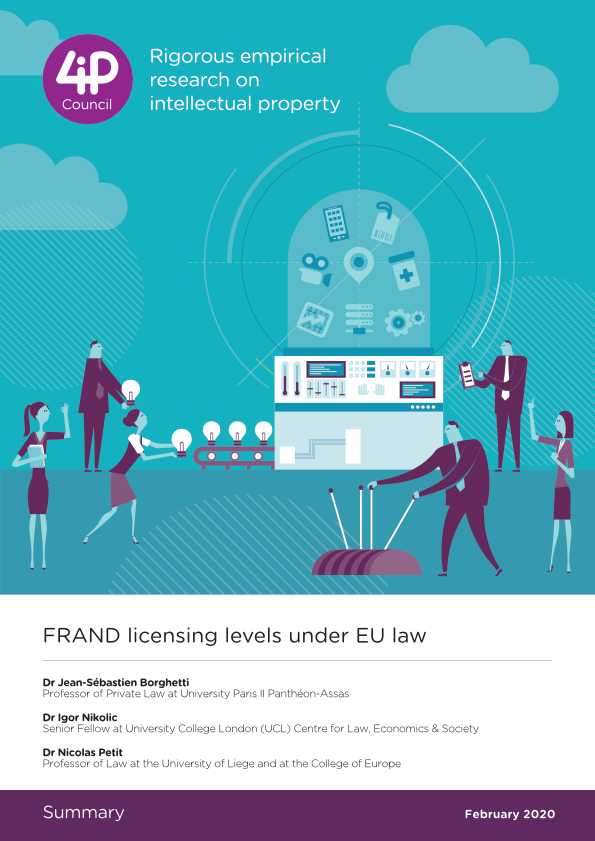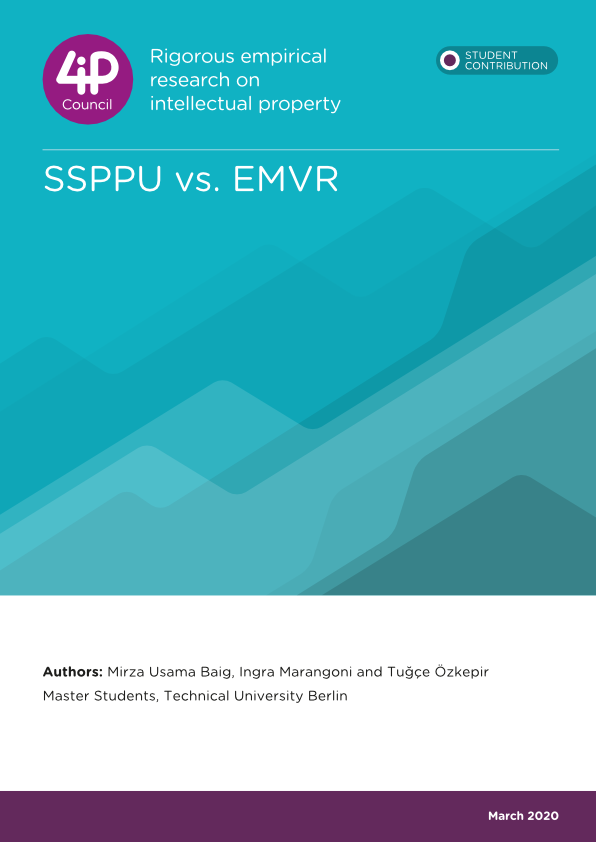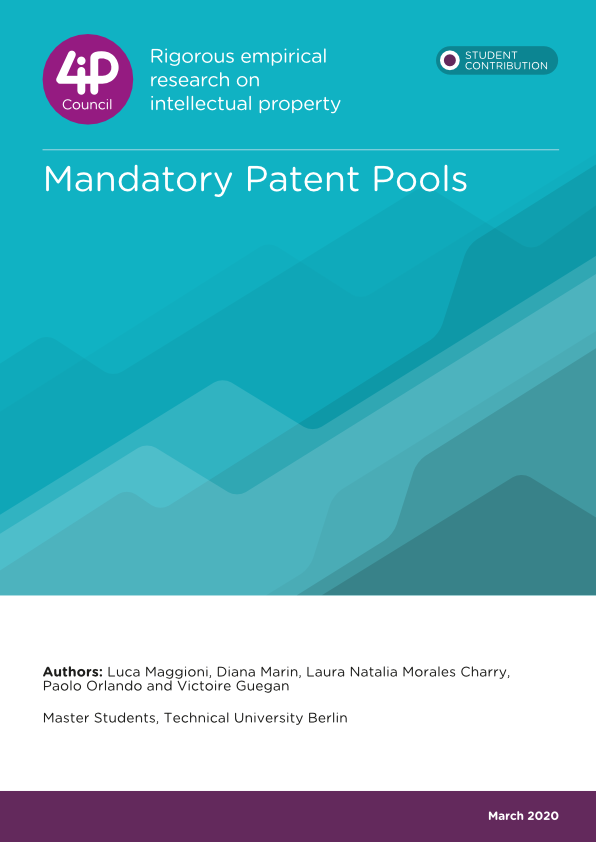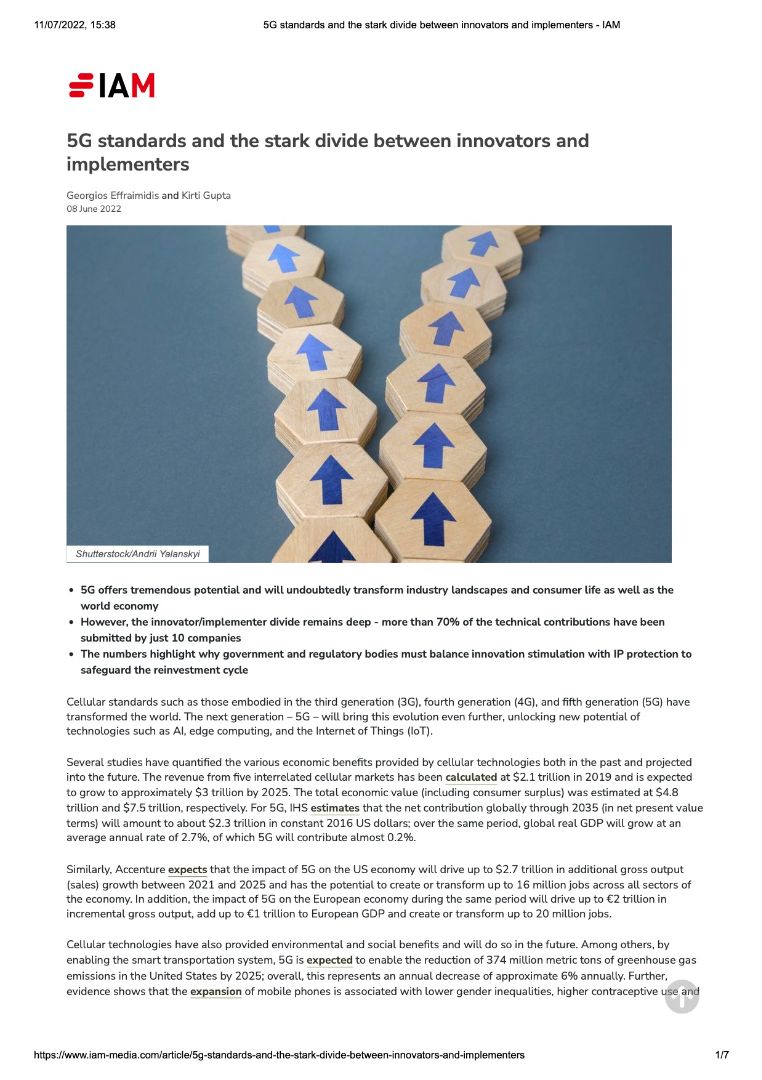This paper strives to provide a balanced, evidence-driven policy governance framework for SEP licensing. It warns about the negative impact to standards-enabled markets of engaging in the SEP policy debate without empirical evidence about some of the most fundamental issues. To avoid this, the authors propose an adjusted framework for impact assessments that could be used as a template for analysis for any future investigation by public or private organisations in the SEP context.
The paper presents the following key findings:
1. An SEP policy governance framework can benefit from a clearer understanding of private ordering (i.e., enforcement of the rule of law) and public ordering (i.e., regulation by the administrative state), as well as of their market implications.
2. The same governance policies implemented through private and public ordering can produce very different results. For example, patent pools, which are seen as pro-competitive when arranged voluntarily by market actors, can clearly devolve into mechanisms for price regulation when implemented by the state as a mandatory mechanism.
3. The SEP licensing context is largely a story of collective, private ordering through the creation of open, consensus-based SDOs, FRAND-based IPR policies, and patent pools. These developments can be an explanation for why to date theories of market failure in SEP-enabled markets have not been supported by any empirical evidence in the mobile economy. Innovation by the active contributors to ICT standards development and by the producers of novel standard implementations has produced trillions of Euros in consumer surplus and many high-paid jobs in Europe and elsewhere. The authors review the private ordering mechanisms and economic implications across the issues of transparency of SEP exposure, licensing in the value chain, FRAND licensing terms and conditions, and patent pools and compare them to received theories of market failure to provide potential explanations for the market success of the mobile economy.
4. In market contexts characterized by open, collective innovation and a strong private ordering regime, governments should resist the unproven counterfactual belief that public ordering can produce solutions that will obviously improve the situation for all actors (i.e. Pareto efficiency). Because of the market complexity, the fragile balance of incentives, and potential strategic market responses to changes in SEP licensing policy, government intervention is more likely to generate trade-offs that redistribute value and costs (i.e. Kaldor-Hicks efficiency) or unintentionally generate a systemic change that lowers social welfare (i.e. government failure).
5. Indirect public ordering can strongly influence private ordering decisions made in the shadow of regulation, which the authors label as market capture. This shadow is apparent in the IPR policy developments at both the IEEE-SA and ETSI. Market contexts experiencing high levels of capture activities are particularly vulnerable to Nirvana Fallacies and thus require an extra focus on evidence-based policy assessment.
6. As stipulated in the EC Impact Assessment Guidelines, problems cited as the reason for government policy intervention need to be studied in-depth and measured holistically. This problem determination assessment needs to start from the beginning of any governmental market investigation, instead of as the last step before policy approval. This lack of thorough investigation into the theoretical problems associated with SEP licensing has led to institutional capture, whereby theories of market failure have grown to become facts in the absence.
7. The authors strongly recommend achieving a shared understanding of the relevant problems and policy objectives before making a significant step impacting SEPs and standards-enabled markets. In the authors’ view, working towards a consolidated assessment of the existing system and its strengths and weaknesses is at least as urgent a task as formulating proposed improvements on how to reform it.
The above-mentioned principles are elaborated as follows:
1. The primary objective of a policy framework for SEP licensing and of ICT standardisation more generally is to support technological innovation and the further growth of wealth and welfare in society. The success story of ICT standards hinges on a supportive regulatory environment.
Patent protection of standardised technologies and the necessity to negotiate SEP licences produce transaction costs. While these transaction costs may be large in absolute terms, they pale by comparison to the benefits of innovation linked to ICT standards. The institution of patent protection itself rests on the idea that society incurs a static cost in exchange for the much greater dynamic benefits of technological innovation. While it is worthwhile exploring opportunities to increase efficiencies in the system, tinkering with the SEP licensing system that produces significant benefits to society should not be undertaken lightly. Any adverse effects on innovation incentives, should they occur, are bound to outweigh potential transaction cost savings. It is thus imperative that innovation incentives occupy a central place in the future debate on SEP policy reform.
2. The regulatory framework in which SEP licensing takes place has evolved over many decades. It has proven flexible and resilient throughout multiple periods of significant technological change and profound transformations in industry structure. Central to the strength of the framework is its governance. ICT standardisation takes place in an astonishing diversity of organisations. Each of these organisations was created according to its own specific circumstances, and there is no one-size-fits-all that could be applicable to each of these.
Nevertheless, the European Commission can, as seen for many decades, contribute through a wide variety of different roles. For example, as a facilitator of discussions among stakeholders, as a guardian against abuses by individual actors or colluding groups, and as a source of non-binding guidance on the implementation and interpretation of existing policies. However, only exceptionally has the Commission advocated for specific policy changes within SDOs, and there is even less precedent for the Commission to act as the originator of experimental and controversial SDO policy innovations.
3. Looking to the future of ICT, there is broad agreement that the IoT and other significant technological evolutions will continue to impact the way in which SEP licensing takes place. Nevertheless, the nature of the anticipated effects is subject to an open debate. All expert assessments are limited in their ability to forecast the future. While a useful debate on possible solutions to potential problems is encouraged, more direct calls for regulatory interventions would need to be based on evidence of the actual occurrence and magnitude of such problems. Conjectures about the future are malleable and prone to being used by any interest group to its advantage. Instead of anticipatory regulation of future evolutions, the authors recommend monitoring the most relevant trends and to intervene in a tailored manner when observed problems in the system are causing social welfare loss.
4. In the authors’ view, the SEP policy debate will struggle to progress productively if there continues to be a lack of empirical evidence about some of the most fundamental and important issues. Thus, while this paper presents a logical governance framework and updated impact assessment methodology, it does not supplant the important and arduous task of collecting empirical observations, debating the relevance of observable data, and taking stock of the state of the evidence.
Proposed adjusted impact assessment framework
The article provides the following adjusted framework for impact assessment that can be used as a template for analysis for any future investigation by public or private organisations in complex policy areas with high levels of capture activities, such as in the SEP context.
1. Make explicit the hypothesised problem to be addressed
2. State the supporting theory and empirical evidence
3. State and assess how the problem has already been addressed by previous private and public ordering mechanisms?
a. 1st private ordering level
b 2nd private ordering level
c 3rd private ordering level
4. Calculate the level of impact
a Minor v. major
b Distributional v. systemic
5. State why a substantial, systemic problem still exists
6. Postulate the potential strategic behaviour of market/ecosystem actors given the proposed solution
7. Calculate the level of impact of the new solution given potential strategic behaviour





